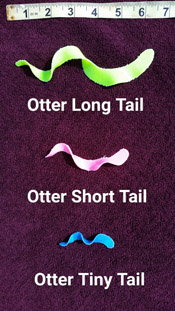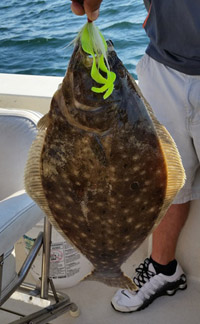| Otter Tails | ||||
That’s when a company first distributed the bait -- strips of pork skin cut in different shapes like a frog, crawfish or minnow -- on a large scale in the United States. The popularity slumped when plastic worms became popular in the 1960s. But by the late 1970s, anglers began fishing pork rind again. The shape, action and scent just caught fish. Otter Tails are a superior alternative, and last longer than pork or plastic, the company says. The company reportedly designed a new material for the bait. The material is soft and flexible. Yet the material is tough, so the bait can be used for repeated catches and can stand up to toothy fish. Otter Tails won’t dry up or shrivel if exposed to sunlight and air too long. Dunk the bait back in the jar occasionally to recharge with scent and lubricant. Otter Tails hold scent like a sponge, the company says. The material could also be dyed.
Otter Tube Tails are 6 ½ inches long and are built to tip tube lures, but can also be fished on bucktails, fluke rigs and umbrella rigs or cast alone on a hook. Otter Short Tails are 5 inches long and designed mostly for bucktails, fluke rigs and sea bass rigs. Otter Tiny Tails are 2 ½ inches long and are meant to be fished on small jigs, spinner baits or spoons or alone. Otter Action Leeches come in all three sizes and are packaged in leach oil. All can be fished in freshwater, too. A bait like a pork rind or a plastic worm but better? Sounds good to us. For more info, visit the Otter Tails website. |


 Pork-rind bait has been
popular
since
Pork-rind bait has been
popular
since  Otter tails come in various colors and different sizes meant to fit all presentations.
Otter tails come in various colors and different sizes meant to fit all presentations.